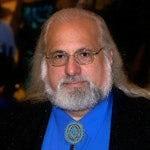Maryland Reboots Data Center Business with New Critical Infrastructure Streamlining Act
Taking a significant step towards attracting data center development to the state, Maryland's Governor Wes Moore last week signed the Critical Infrastructure Streamlining Act of 2024, which clarifies the definition and legislative framework around the use of emergency backup power generation in the state.
The law redefines what types of businesses are required to acquire a Certificate of Public Convenience from state authorities in order to install backup power generation systems.
The Carrot and the Stick
Back in October 2023, the Maryland Public Service Commission (PSC) denied Aligned Data centers application for 160 diesel generators, the number they felt was necessary to provide backup power for Aligned’s planned 264-megawatt (MW) data center campus.
The PSC also rejected Aligned’s application for an exemption of the state’s 2022 emission rules, and determined that only 70 MW of backup power generation would be permitted.
Despite Aligned’s arguments that they were not defining a power generation station properly relative to data center backup power, the PSC declined to make any changes to their decision.
This was despite the fact that the original regulation was designed to address commercial power plants and transmission lines, and did not specifically address backup power generation.
The lack of flexibility exhibited by the PSC led to Aligned pulling their project, along with its potential $40 million in annual tax revenue and thousands of potential jobs.
Quick Turnabout re: 'Generating Stations'
The scale of the project being canceled, and the resulting media coverage and lobbying by various groups, led to Maryland looking at redefining “generating stations" in relation to certain industries.
The redefinition came via the new Critical Infrastructure Streamlining Act, which explicitly excludes backup power generation facilities from the auspices of the PSC in these cases.
In a turnabout for tradionally glacially slow government regulation changes, in January of this year, the new bill was introduced and signed into law only seven months from the point the motivating incident occurred.
As laid out by the new statute, Maryland's law now specifies:
“For the purpose of altering and establishing the definition of 'generating station' for the purpose of exempting the construction of certain generating facilities used to produce electricity for the purpose of onsite emergency backup and certain test and maintenance operations from the requirement to obtain a certificate of public convenience and necessity or certain other related approvals under certain circumstances; and generally relating to generating stations.”
While the new law directly addresses the concerns of the data center industry, it also has a positive benefit for other industries that require significant on-site backup power generation, such as hospitals and the telco sector.
A Quantum Shift
The Critical Infrastructure Streamlining Act, signed by Governor Wes Moore on May 9, 2024, passed with a unanimous vote of both the Maryland House and Senate.
Quantum Loophole, who announced the signing of the legislation in a press release on May 13th, is currently developing their first Maryland project, Quantum Frederick, a 2,100-acre development in Frederick County, Maryland that provides land, water, power, and fiber to data centers.
Quantum Loophole will be a significant beneficiary of the advantages in backup power generation that the new law codifies for the data center industry in the state. The statute goes into effect on July 1, 2024.
As reckoned by Quantum Loophole, "The newly enacted legislation reiterates the state’s commitment to welcoming data centers, and fosters continuous innovation for businesses throughout Maryland."
During Governor Moore’s May 9 press conference where he signed the Act into law, he remarked, “This bill is going to supercharge the data center industry in Maryland, so we can unleash more economic potential and create more good paying union jobs.”
Fast Track for Quantum Frederick
Quantum Frederick's over 2100 acres of entitled, shovel-ready land for deployment of large-scale Internet infrastructure is served by transmission power from First Energy and their wholly owned distribution entity Potomac Edison at multi-gigawatt scale.
Meanwhile, the largest capacity fiber ring ever constructed, at a capacity of up to 235,000 strands, interconnects the campus to Northern Virginia via underground ducts, designed to exceed the highest security standards as they cross beneath the Potomac River.
Highlighting the Quantum Frederick campus's nearness to the country’s center of data center development in northern Virginia, Rich Paul-Hus, SVP of Public Affairs for Quantum Loophole, commented:
“We applaud and thank Governor Moore and the Maryland Legislature for their foresight and efforts to streamline and clarify the use of back-up generators, not just for data centers, but for other industries as well, including healthcare, hospitality, manufacturing, and education.
Within just 20 miles of the Internet ecosystem located in Northern Virginia, Quantum Loophole in Frederick, Maryland now has a fast-track path forward to welcoming data centers. Our...master-planned data center communities are purposely designed to create a mutual benefit for the environment, the community and the data center industry.
Our goal is to create a growth path for digital infrastructure that helps to fund vital programs for residents throughout the state, while designing a nature-first approach to industrial development.”
The Quantum Loophole press release doubles down on the value of encouraging data center growth, with the company's Founder and CEO, Josh Snowhorn, telling us:
“The impact of this bill will reverberate positively throughout the entire state for at least the next two decades.
Third-party economic reports equate the value of this bill to be worth at least $30 billion in capital investments over the next 20 years, with over 52,000 jobs statewide and $3.4 billion in associated employee compensation during the construction phase of Quantum Frederick alone.
The economic estimates are only the tip of the iceberg of what’s possible as we bring on-line more fiber-optic and power-enabled land for data center development for the industry and for the people of Maryland.”
Buddy Rizer, Executive Director for Economic Development in Loudoun County, Virginia (and as the godfather of Ashburn's famed Data Center Alley, himself no stranger to the plusses and minuses of significant data center development), said:
“I’ve personally seen the transformative impact that data centers can have on a community, enhancing both economic diversity and resilience. It’s thrilling to witness the burgeoning digital infrastructure in communities across the mid-Atlantic region.
With Quantum Loophole’s conscientious approach to development, Frederick County and Maryland stand to reap immense benefits. As a native of the 'Free State,' I believe in the promise it holds for the future.”
Bellwether for Future Data Center Development
It seems important to note how Maryland’s major step to encourage data center development in the state required the government to balance both economic and environmental issues in making their decision.
This required not taking any facet of the development at face value -- and required understanding how backup power is used, when compared to primary generation.
The move also adds another high-level consideration for data center developers, to whom power availability has become a major issue (to say the least).
The Maryland resolution also highlights how issues such as microgrid development and on-site for generation or both primary and backup power have become leading issues in data center site selection and development.
Washington, D.C. local news station WUSA9 reports on the signing of Maryland's Critical Infrastructure Streamlining Act of 2024.






